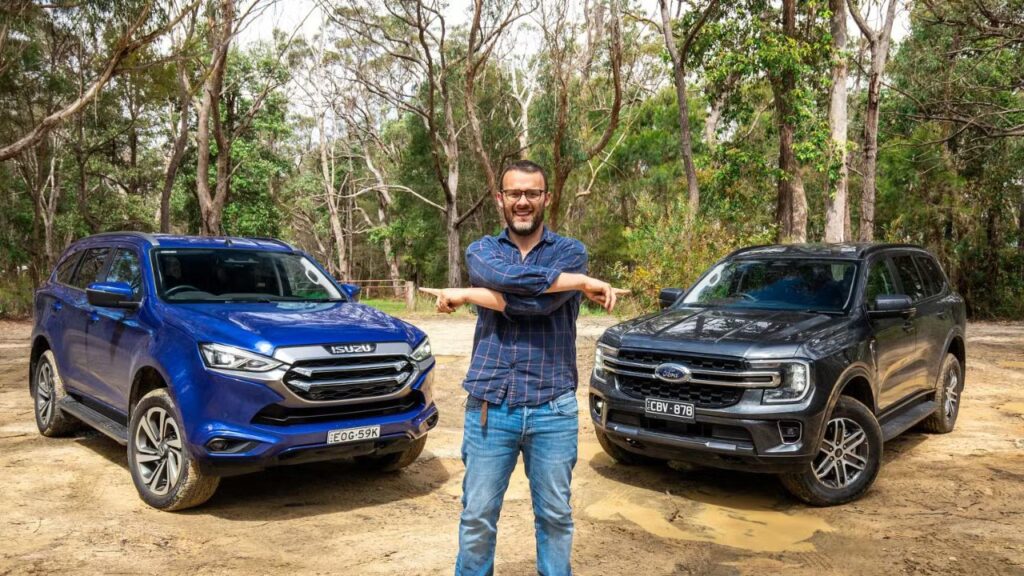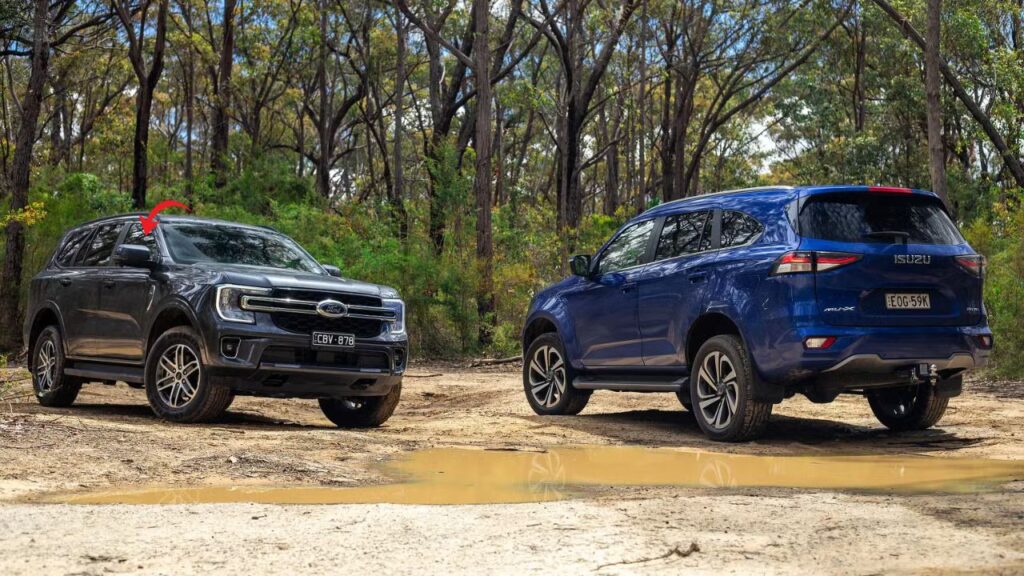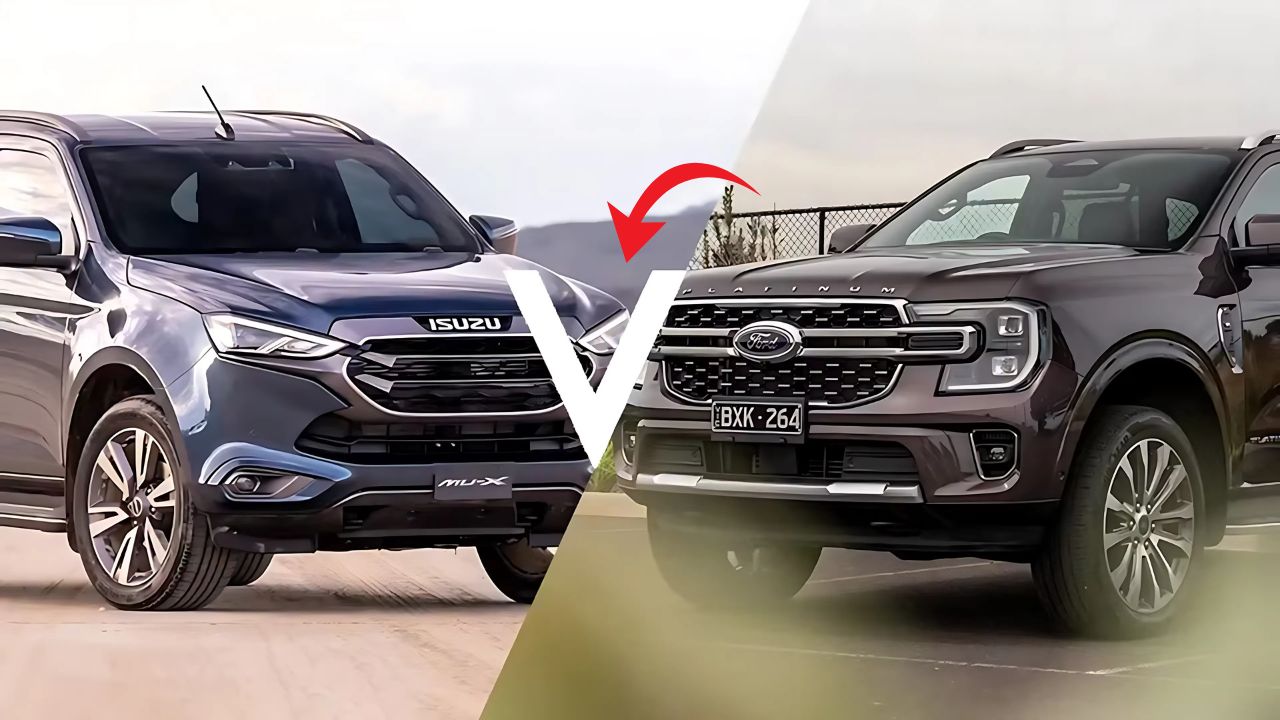The Australian automotive landscape has witnessed another significant shift as two popular SUV models face production cessation. Ford Everest and Isuzu’s MU-X rear-wheel-drive variants have reached the end of their manufacturing journey.
This development marks a pivotal moment in Australia’s SUV market dynamics. Both vehicles have served Australian families for years, offering robust performance and reliability.

What Led to This Decision
Market forces have played a crucial role in this manufacturing halt. Consumer preferences have gradually shifted toward all-wheel-drive systems over traditional rear-wheel-drive configurations.
The decision wasn’t made overnight but evolved through careful market analysis. Both manufacturers recognized changing buyer expectations and adapted their strategies accordingly.
Market Demand Analysis
Recent sales data reveals declining interest in RWD-only SUV models across Australia. Buyers increasingly prefer vehicles with enhanced traction capabilities for various driving conditions.
All-wheel-drive systems offer superior handling on wet roads and off-road terrain. This preference has become particularly pronounced among Australian consumers who value versatility.
Modern families expect their SUVs to perform well in diverse environments. From school runs to weekend camping trips, versatility has become paramount.
The shift reflects broader global automotive trends toward enhanced safety features. AWD systems provide additional confidence during adverse weather conditions.
Emission Standards Impact
Australia’s evolving emission standards have influenced manufacturer decisions significantly. Newer regulations require improved fuel efficiency and reduced carbon emissions.
RWD models typically consume more fuel than their AWD counterparts in modern configurations. This efficiency gap has become a determining factor in production decisions.
Manufacturers face increasing pressure to meet environmental targets while maintaining performance standards. The balance between power and efficiency has become increasingly challenging.
Consumer awareness about environmental impact continues growing steadily throughout Australia. This consciousness influences purchasing decisions more than ever before.
Ford Everest’s Journey in Australia
The Ford Everest has been a stalwart in Australia’s competitive SUV market. Its robust build quality and reliable performance earned loyal customer following.
Ford introduced the Everest to compete directly with established players like Toyota Prado. The vehicle quickly gained recognition for its towing capacity and off-road capabilities.
Key Features That Made Everest Popular
The Everest’s ladder-frame construction provided exceptional durability for harsh Australian conditions. This design philosophy resonated well with buyers seeking robust vehicles.
Its generous interior space accommodated large families comfortably during long journeys. Seven-seat configuration became a significant selling point for growing households.
Advanced safety features including autonomous emergency braking attracted safety-conscious buyers. Ford’s commitment to occupant protection was evident throughout the model’s lifecycle.
The vehicle’s towing capacity of up to 3,500 kilograms appealed to recreational users. Boat owners and caravan enthusiasts found the Everest particularly suitable for their needs.
Market Performance Over the Years
Sales figures showed steady performance despite increasing competition from Japanese manufacturers. The Everest carved out its niche among buyers preferring American engineering.
Ford’s marketing strategy emphasized the vehicle’s ruggedness and reliability consistently. Australian conditions provided the perfect testing ground for the Everest’s capabilities.
Customer satisfaction surveys indicated high approval ratings for build quality and comfort. However, fuel efficiency concerns began emerging as petrol prices fluctuated.
Service network accessibility across Australia supported the model’s market presence effectively. Ford’s extensive dealer network provided confidence to potential buyers.
Isuzu MU-X Market Position
Isuzu’s MU-X represented the brand’s entry into the competitive seven-seat SUV segment. The vehicle leveraged Isuzu’s commercial vehicle expertise for passenger applications.
Built on the successful D-Max platform, the MU-X offered proven reliability. This foundation provided confidence to buyers familiar with Isuzu’s reputation.
Design Philosophy and Engineering
The MU-X emphasized practicality over luxury in its initial market positioning. This approach attracted buyers seeking value-oriented transportation solutions.
Isuzu’s focus on durability reflected the brand’s commercial vehicle heritage clearly. The MU-X inherited robust engineering principles from successful truck platforms.
Interior design prioritized functionality with emphasis on passenger comfort during extended journeys. The vehicle’s ergonomics reflected careful consideration of family requirements.
Ground clearance and approach angles catered to Australia’s diverse terrain conditions. The MU-X proved capable across various driving environments throughout the continent.
Customer Reception and Feedback
Initial customer response highlighted the vehicle’s value proposition in competitive pricing. The MU-X offered similar features to competitors at attractive price points.
Reliability ratings remained consistently high throughout the model’s production run. Isuzu’s reputation for dependability translated effectively to passenger vehicle applications.
Fuel efficiency concerns similar to other RWD models affected long-term market acceptance. Rising fuel costs made efficiency a primary consideration for buyers.
After-sales service quality received positive feedback from owners across Australia. Isuzu’s commercial vehicle service network supported passenger car customers effectively.
Industry-Wide Implications
The cessation of these RWD models reflects broader automotive industry transformations. Manufacturers worldwide are reassessing product portfolios against changing consumer expectations.
Environmental regulations continue tightening globally, influencing design and engineering decisions significantly. Australian manufacturers must balance performance requirements with efficiency mandates.
Supply Chain Considerations
Manufacturing decisions increasingly consider global supply chain complexities and cost structures. Local production must compete with international manufacturing capabilities.
Component sourcing for RWD systems has become less economical due to reduced volumes. Economies of scale favor AWD system production in current market conditions.
Tooling and equipment investments require justification through projected sales volumes over extended periods. Declining RWD demand makes such investments challenging to justify.
Quality control standards must be maintained regardless of production volumes. Smaller production runs can increase per-unit manufacturing costs significantly.
Technology Evolution Impact
Advances in AWD system efficiency have reduced the traditional fuel economy advantage. Modern AWD systems can match or exceed RWD efficiency in many applications.
Electronic stability control integration works more effectively with AWD configurations. Safety systems increasingly rely on all-wheel traction for optimal performance.
Hybrid and electric vehicle technologies favor AWD system architectures generally. Future powertrain developments align better with all-wheel-drive configurations.
Consumer electronics integration requires sophisticated vehicle systems management. AWD platforms typically offer better integration capabilities for modern features.
Consumer Impact and Alternatives
Existing owners of RWD Everest and MU-X models shouldn’t experience immediate concerns. Both manufacturers continue supporting these vehicles through established service networks.
Parts availability remains assured through existing inventory and aftermarket suppliers. The cessation affects new vehicle production rather than ongoing support.
Available Alternatives in the Market
Toyota Prado continues offering RWD variants for buyers preferring traditional configurations. This option maintains some choice in the RWD SUV segment.
Mitsubishi Pajero Sport provides another alternative with proven off-road capabilities. The vehicle maintains competitive pricing while offering modern features.
Ford and Isuzu’s AWD variants of these models remain available. These options provide enhanced capability while maintaining familiar brand experiences.
Used vehicle markets will likely see increased interest in RWD variants. Collectors and enthusiasts may view these models as increasingly valuable.
Long-term Market Predictions
Industry analysts predict continued consolidation toward AWD-only offerings in premium segments. RWD configurations may become increasingly rare in new vehicle markets.
Electric vehicle adoption will likely accelerate this trend significantly over coming years. Electric powertrains typically favor AWD configurations for performance optimization.
Consumer preferences will continue evolving toward enhanced safety and capability features. Market demands increasingly favor comprehensive traction management systems.
Manufacturer focus will shift toward optimizing AWD system efficiency and cost-effectiveness. Innovation efforts will concentrate on improving all-wheel-drive technology accessibility.
Environmental and Regulatory Factors
Australia’s emission standards alignment with international regulations influences manufacturer decisions significantly. Compliance costs favor platforms with broader global appeal.
Carbon emission targets require continuous improvement in fuel efficiency across model ranges. RWD models typically face greater challenges meeting stringent efficiency requirements.
Government Policy Influence
Federal and state government incentives increasingly favor efficient vehicle technologies. These policies indirectly influence consumer purchasing decisions and manufacturer strategies.
Fleet emission averaging requirements affect manufacturer portfolio planning decisions substantially. Low-volume, high-emission models become increasingly difficult to justify economically.
Infrastructure development for alternative fuels may influence future powertrain strategies. Government investment priorities signal long-term market direction expectations.
Consumer taxation policies including luxury car tax thresholds affect market segment viability. These factors contribute to manufacturer product planning considerations.
Future Outlook for Australian SUV Market
The Australian SUV market will likely continue consolidating around AWD-capable platforms. Consumer expectations for enhanced capability will drive this trend forward.
Electrification will introduce new dynamics to the traditional RWD versus AWD discussion. Electric powertrains may offer different advantages and compromises entirely.
Import regulations and trade agreements will influence manufacturer decisions about local market offerings. Global platform strategies will increasingly determine Australian availability.
Consumer education about AWD benefits versus costs will shape market acceptance rates. Understanding efficiency improvements in modern AWD systems remains important.

The cessation of Ford Everest and Isuzu MU-X RWD model production represents natural market evolution. Consumer preferences and regulatory requirements have aligned to favor all-wheel-drive configurations.
Both manufacturers demonstrated responsiveness to market conditions through this strategic decision. Adaptation remains crucial for success in Australia’s competitive automotive market.
Future vehicle development will likely emphasize efficiency, capability, and environmental responsibility simultaneously. The Australian market will continue reflecting these global automotive trends.
FAQs
Q: Will parts still be available for existing RWD Everest and MU-X models?
Yes, both Ford and Isuzu maintain comprehensive parts support for existing vehicles through their established service networks.
Q: Are AWD versions of these models still in production?
Ford and Isuzu continue manufacturing all-wheel-drive variants of both models with enhanced features and capabilities.
Q: What alternatives exist for buyers preferring RWD SUVs?
Toyota Prado and Mitsubishi Pajero Sport continue offering RWD variants, while used vehicle markets provide additional options.

